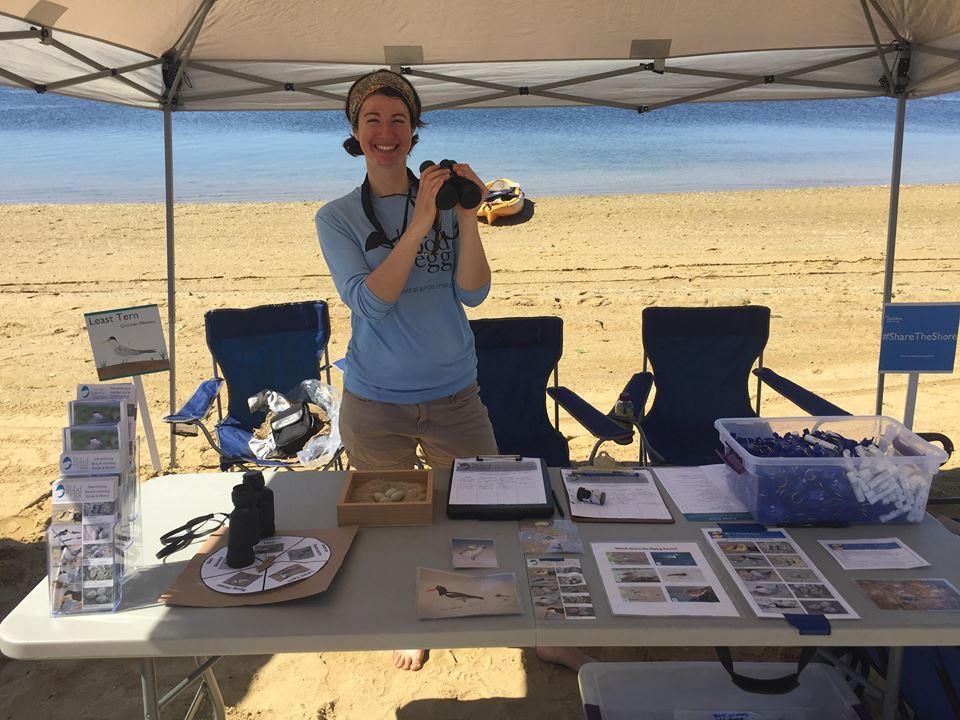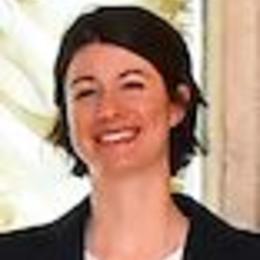My name is Erica Schwabach and I am the 2018 Women in Conservation Intern and Audubon New York’s seasonal Outreach Field Technician. I primarily led the 'Be a Good Egg' outreach events this season, coordinating and recruiting volunteers to help with engagement efforts. Over the course of the summer, we talked to thousands of beach-goers about our priority shorebirds, some of which are endangered and threatened - both statewide and federally. For me, the most meaningful moments were found in observing the birds in their natural habitat and educating others on why they are so wonderful.
Throughout the season we worked in beautiful natural areas, nestled right amongst some of the most densely packed population in the United States. The birds that breed and nest here defy all possible odds, including supermoon floods that wash their nests away in the tide; predators - from raccoons to fox to feral cats to crows to gulls and more; human disturbance that comes from living in a highly populated coastal area; not to mention the long migration north to arrive here in the first place! Every year we unfortunately lose some birds along the way, having to travel thousands of miles across various hazards up from the Bahamas to our Long Island beaches.
But then there are the ones who make it. They’ve survived the journey and are ready to stake out territory and start their families. They will fight every day for sheer survival. And that’s where we, the biologists and technicians, come in. We do everything possible to ensure that these vulnerable species, such as the Piping Plover, remain unharmed, unpredated, and undisturbed by people, and that their babies hatch and thrive. One of the key actions that we preform is exclosing nests to keep out predators. This takes a tremendous amount of teamwork and collaboration, only having about 15 minutes to put up the exclosure so that the birds remain as unstressed as possible. If successful, the exclosures largely decrease predation and increase rates of reproductive success.
As the exclosure season came to a close, I started my prep for our twelve outreach events on Long Island shores. As part of my position, I rallied and recruited volunteers, who are absolute rockstars and the backbone of our Be a Good Egg events. Working with them was incredibly rewarding. Talking with beach-goers gave me the opportunity to engage with people who had never even heard of a shorebird before, let alone a Piping Plover. Educating people about the beach so close to where they live was very valuable.
I also had the amazing opportunity to help facilitate and lead the “Kid’s Sign Project.” Local students created artwork that showcased how to “Share the Shore” with shorebirds. Winning designs were made into signs and displayed on beaches around Long Island. The children attended a field trip to Point Lookout Beach and participated in a press event with the Town of Hempstead. The kid’s were ecstatic; it was a memorable day.
Throughout the season we monitored Piping Plovers, terns, American Oystercatchers, and Black Skimmers courting and laying eggs, chicks successfully hatching, and eventually fledging and starting their migration paths back to their wintering grounds.
I remain inspired by women conservationists who came before me, such as Rachel Carson, the author of Sense of Wonder. Working with shorebirds at Audubon New York has been a life changing and incredible experience. I will never forget the seeing my first Piping Plover chick, not much bigger than the size of a cotton ball. It was truly a moment full of wonder, awe, kinship, and admiration for all that they go through to survive.









